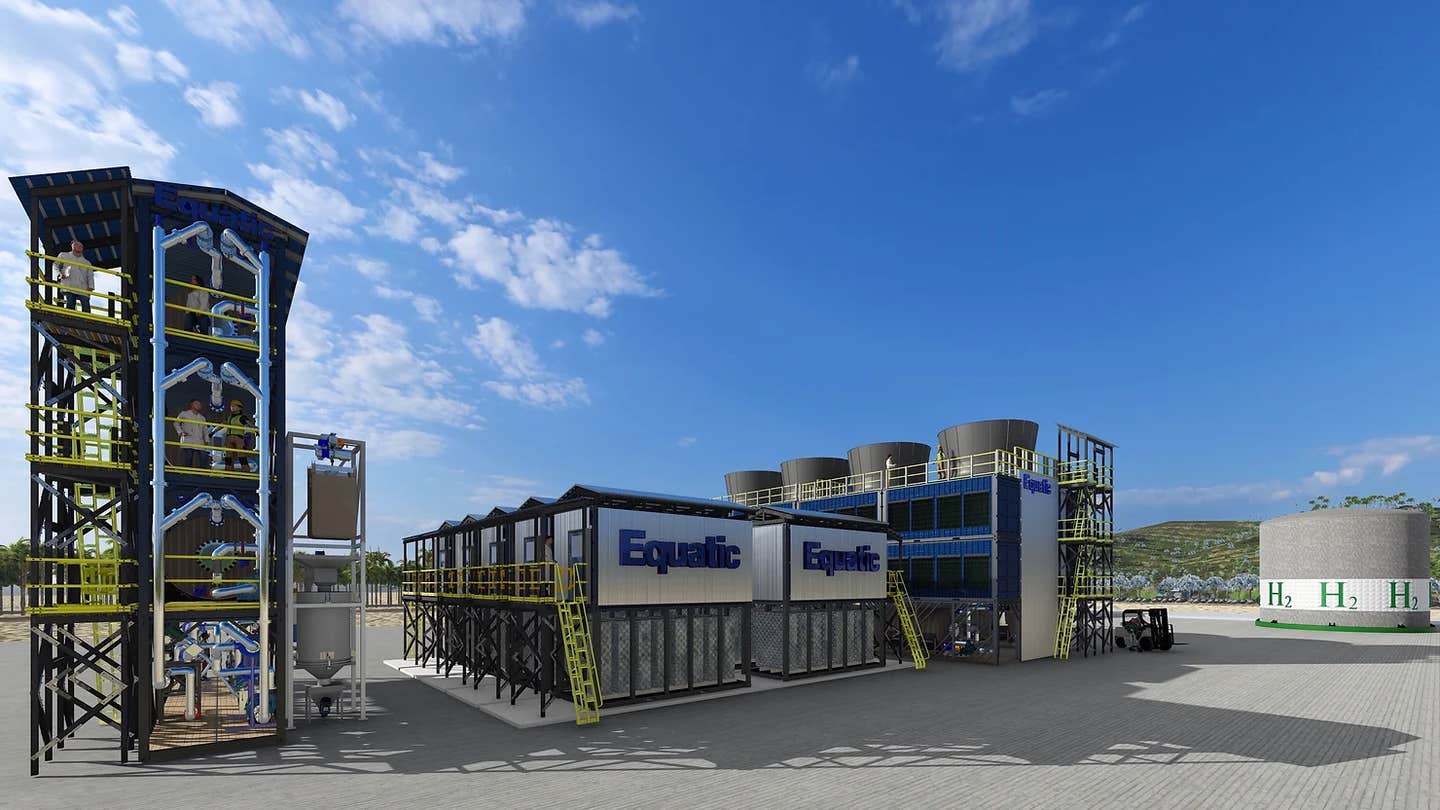Carbon removal plant absorbs CO2 at 99,000 times the rate of all Earth’s oceans combined
The world’s oceans act as nature’s most significant carbon sink, soaking up roughly 25% of the carbon dioxide (CO2) produced by human activities.

The world’s oceans are nature’s largest carbon sink, absorbing about 25% of human-generated carbon dioxide (CO2). (CREDIT: Equatic)
The world's oceans are nature's largest carbon sink, absorbing about 25% of human-generated carbon dioxide (CO2). Carbon dioxide removal (CDR) companies, like Equatic, are working to enhance this natural process to capture even more CO2.
"We take what the ocean does already and amplify that," Edward Sanders, COO at Equatic, told reporters.
Recently, Equatic announced the start of engineering designs for the world's first commercial-scale, ocean-based CDR plant. According to Sanders, this plant could remove CO2 at a rate 99,000 times faster than the oceans naturally do.
Equatic is among a growing number of marine CDR companies aiming to boost the ocean's capacity to absorb CO2. A report by the National Academies of Science, Engineering, and Medicine estimates that marine CDR could potentially remove billions of tons of CO2 from the atmosphere.
The Technology Behind Equatic's Carbon Capture
Equatic uses a method called seawater electrolysis to capture CO2. This process involves running an electric current through seawater, splitting it into hydrogen, oxygen, and two separate fluids: an acid and a base.
"The process stores carbon that was dissolved in the water as a solid, similar to the material that makes up seashells, and creates an alkaline slurry that removes carbon dioxide from the atmosphere via a cooling tower," Sanders explained.
Related Stories
The hydrogen produced can be converted into clean hydrogen fuel, which Equatic can either use to power its CDR plants or sell. Notably, companies like Boeing and payment service provider Stripe have already signed contracts with Equatic for its hydrogen.
Equatic operates two small pilot plants to validate its technology—one in Los Angeles and another in Singapore. A larger plant is set to launch in Singapore, with a capacity to absorb about 4,000 metric tons of CO2 annually. This plant will pave the way for Equatic's first commercial-scale plant, expected to launch in 2026 or 2027 in partnership with Canadian carbon removal project developer Deep Sky.
Researchers estimate the cost of removing one ton of CO2 from the atmosphere could range between $230 and $540 by 2050. However, Equatic aims to offset these costs by producing and selling green hydrogen. The company predicts that by 2030, its new plant could achieve CDR at less than $100 per ton.
Sanders envisions a global fleet of these CDR plants. "Once we get to that point, we're not talking about a hundred thousand tons, we're not talking about millions of tons, we're talking about hundreds of millions of tons because this technology can be replicated in many countries," he said.
Environmental and Economic Concerns
With no commercial-scale, ocean-based CDR plants in operation yet, the environmental and economic impacts remain uncertain. Ocean-based CDR techniques manipulate seawater in ways that could potentially disrupt marine life.
"You're going to be pulling in phytoplankton and bugs and other potential living creatures from the ocean and filtering those out can have some environmental impacts," said Jessica Cross, an earth scientist specializing in oceanic CDR at the Pacific Northwest National Laboratory.
The specific impacts depend on the location of the CDR operation and the organisms involved. Sanders assured that Equatic closely monitors discharge from its CDR plants to comply with legal pollution standards. The upcoming plant in Singapore will also filter seawater to remove marine life before the water enters the plant.
Despite the potential of CDR technology, it is expensive and limited in scale. Therefore, it cannot replace efforts to decarbonize and reduce emissions.
The benefits of CDR technology are "far in the future, whereas the risks of initiating this industry and this infrastructure development are local, short-term, and much more immediate," Cross noted.
"Figuring out how to balance this diffuse global benefit with the local risk is something that responsible researchers should be grappling with," she added.
As we continue to innovate and develop CDR technologies, it is crucial to consider both their potential benefits and risks. Equatic's efforts represent a promising step towards harnessing the ocean's natural processes to combat climate change, but it is clear that we must continue to pursue a balanced approach that includes reducing emissions and protecting our environment.
Note: Materials provided above by The Brighter Side of News. Content may be edited for style and length.
Like these kind of feel good stories? Get The Brighter Side of News' newsletter.
Joseph Shavit
Head Science News Writer | Communicating Innovation & Discovery
Based in Los Angeles, Joseph Shavit is an accomplished science journalist, head science news writer and co-founder at The Brighter Side of News, where he translates cutting-edge discoveries into compelling stories for a broad audience. With a strong background spanning science, business, product management, media leadership, and entrepreneurship, Joseph brings a unique perspective to science communication. His expertise allows him to uncover the intersection of technological advancements and market potential, shedding light on how groundbreaking research evolves into transformative products and industries.



